How did the Civil War encourage the growth of industry?
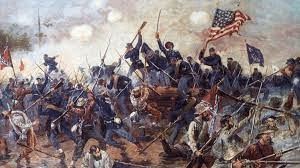
The Civil War led factories and railroads to expand. It also led to improved methods of food storage and an increase in immigration.
What was the name of the first federal agency created to regulate business activities and what did it do?
In 1887, the United States Senate created the Interstate Commerce Commission (ICC) to oversee railroad operations. This was the first federal body ever set up to monitor American business operations. The ICC could only monitor railroads that crossed state lines, and it could not make laws or control the railroads’ transactions. Still, the ICC could require the railroads to send their records to Congress, so that Congress could initiate investigations of unfairness.
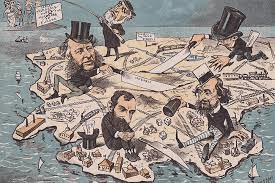
In what ways did factory owners exploit their workers, why did they do it, how did the workers respond?
Factory owners could require workers to live in company towns, and these owners charged high interest at company stores where workers were required to shop. Sometimes, children were required to work to help support their families. Also, owners often segregated workers according to their ethnicity. They might require long hours in an unsafe work environment. They did these things to maximize profits. Workers responded by unionizing to maximize their leverage in collective bargaining to demand better treatment.
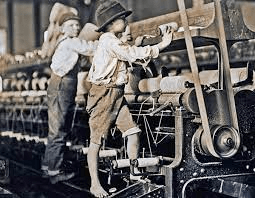
What was a Greenback?
Greenbacks, or U.S. dollars, were first created to finance the civil war and were called as such because their backs were printed in green. Their value against gold depreciated during the war but recovered after the war ended.
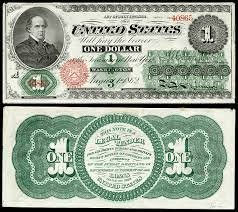
How did the government subsidize the railroad industry?
The government gave railroad builders millions of acres of land.
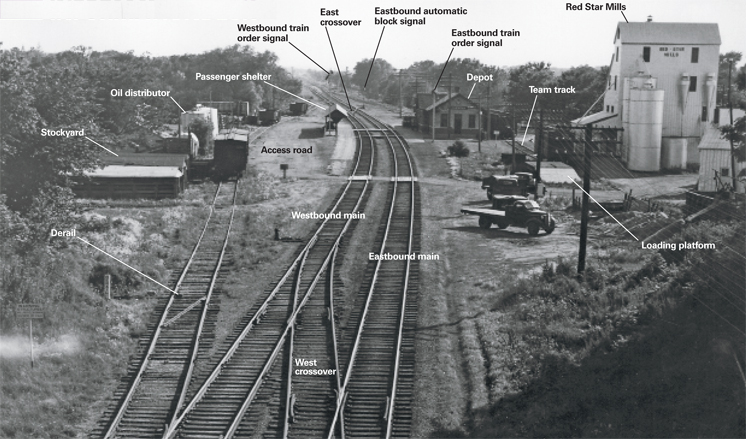
How did big business shape the American economy in the late 1800s and early 1900s?

Industrialization and technology affected the economy by introducing new industries, improving transportation and communication, and introducing mass production. These changes shifted the population from rural to urban areas and polluted the environment. Big business manipulated markets to maximize profits, formed corporations to avoid losses, created monopolies and cartels, and used vertical integration to control markets and eliminate competitors. These tactics often favored national businesses to the detriment of local, family-owned businesses.
What was the Bessemer Process?
The Bessemer process was the first inexpensive industrial process for the mass production of steel from molten pig iron before the development of the open hearth furnace. The key principle is removal of impurities from the iron by oxidation with air being blown through the molten iron.
Why did business leaders create new forms of ownership like monopolies, cartels, and trusts?
Businesses created new forms of ownership to avoid liabilities, minimize cost, increase profits, gain capital, eliminate competition, and sometimes to get around laws that would prevent certain business practices.
What is a company town? Why were rural mining operations particular suitable for this type of business arrangement? What type of worker exploitation frequently occurred with company towns?
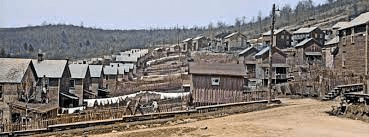
Many laborers, especially those who worked in mines, were forced to live in isolated communities near their workplaces. The housing in these communities, known as company towns, was owned by the business and rented out to employees. The employer also controlled the “company store,” where workers were forced to buy goods. The company store sold goods on credit but charged high interest. As a result, by the time the worker received wages, most of the income was owed back to the employer. Since workers could be arrested if they left their jobs before they repaid these loans, employers could hold workers to their jobs through a system that workers’ advocates called “wage slavery.” Through its management of the company town, employers could also reinforce ethnic competition and distrust. For example, Mexican, African American, or Chinese workers could be segregated in separate towns.
What were the two companies tasked with building the transcontinental railroad?
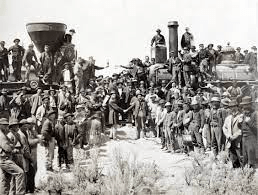
In 1862, Congress hastily passed the Pacific Railroad Act. This act led to the creation of the Union Pacific, which would lay rails west from Omaha, and the Central Pacific, which would start in Sacramento and build east.
What is the difference between a monopoly and a cartel?
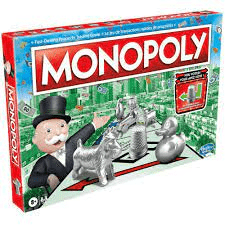
A monopoly is where one company is the only company in a given industry, ie Standard Oil. A cartel is where several businesses in an industry collude with one another to set the price of the good or service that they provide. Both are unfair business practices and are against the law in the U.S.
What were some of the characteristics that were present in the U.S. that contributed to industrial growth?
Abundant natural resources and a large labor pool of immigrants allowed the expansion of industry to continue.
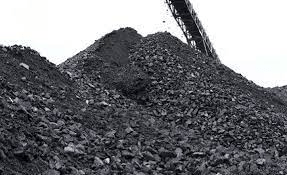
Why is a corporation a business structure that facilitates industrial growth?

In a corporation, a number of people share the ownership of a business. If a corporation experiences economic problems, the investors lose no more than they had originally invested in the business. The corporation was the perfect solution to the challenge of expanding business, especially for risky industries such as railroads or mining. Corporations were perfectly suited to expanding markets. They had access to huge amounts of capital, or invested money, allowing them to fund new technology, enter new industries, or run large plants across the country.
How was the Sherman Antitrust Act initially used in the United States?
Courts used legislation like the Sherman Antitrust Act to order unions to stop disrupting free trade. Later it was used to break up monopolies and trusts.
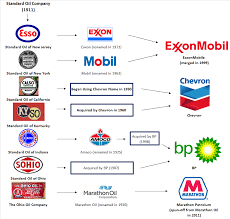
What changes in American society following the Civil War put the United States on a collision course for conflict with the Native Americans?
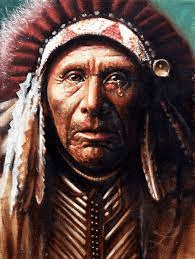
The rapid industrial development and economic expansion that followed the Civil War set Native Americans and white settlers on a path to conflict. Advances in communication and transportation that supported industrial growth also reinforced white Americans’ faith in manifest destiny. Horace Greeley, editor of the New York Tribune, encouraged the poor to move west.
What is the difference between horizonatal and vertical integration?
The system of consolidating many firms in the same business is called horizontal integration. Vertical integration is when one company controls many different businesses that make up all phases of a product’s development.
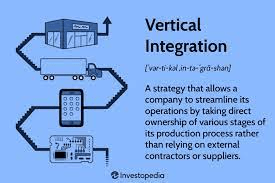
Who drilled the first oil well? Where and when was it drilled? What initially was the refined oil used for?
In 1859, Edwin Drake drilled what became the world’s first oil well in Titusville, Pennsylvania. Before Drake’s invention, oil, which was used for light and fuel, was mainly obtained from boiling down whale blubber. But whale hunting was time-consuming, and whales were becoming scarce. Drilled oil was relatively cheap to produce and easy to transport. The oil was refined into kerosene.
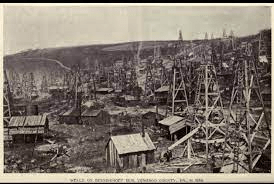
What is Social Darwinism and why was it controversial?
In 1859, biologist Charles Darwin published On the Origin of Species, arguing that animals evolved by a process of “natural selection” and that only the fittest survived to reproduce. Yale professor William Graham Sumner soon applied this theory to the rough-and-tumble world of American capitalism, calling it Social Darwinism. He declared that wealth was a measure of one’s inherent value and those who had it were the most “fit.” People used Social Darwinism to justify all sorts of beliefs and conditions. Supporters of the laissez-faire economic system argued that the government should stay out of private business, because interference would disrupt natural selection. Many Social Darwinists believed that the nation would grow strong by allowing its most vigorous members to rise to the top. Therefore, they felt that it was wrong to use public funds to assist the poor. Social Darwinism was often used to fuel discrimination. Social Darwinists pointed to the poverty-stricken condition of many minorities as evidence of their unfitness.
What was the effect of the Haymarket Riot on organized labor?
The Haymarket Riot left an unfortunate legacy. At least eight people died as a result of the violence that day. The Knights of Labor fizzled out as people shied away from radicalism. Employers became even more suspicious of union activities, associating them with violence. In general, much of the American public at that time came to share that view.
Which immigrant suffered the most during the construction of the transcontinental railroad?
Leland Stanford, president of Central Pacific, former California governor and founder of Stanford University, told Congress in 1865, that the majority of the railroad labor force were Chinese. Without them,” he said, “it would be impossible to complete the western portion of this great national enterprise, within the time required by the Acts of Congress.'
They toiled through back-breaking labor during both frigid winters and blazing summers. Hundreds died from explosions, landslides, accidents and disease. And even though they made major contributions to the construction of the Transcontinental Railroad, these 15,000 to 20,000 Chinese immigrants have been largely ignored by history.
Who made the comment , 'Of such as these the public verdict will then be: The man who dies rich thus dies disgraced'?
Andrew Carnegie: Wealth (1889) One of America’s wealthiest tycoons, Andrew Carnegie was also a dedicated philanthropist. By the time he died, he had given away more than 80 percent—over $350 million—of his own fortune. Carnegie wrote frequently about the role of wealthy businessmen in the American economy. In Wealth, he wrote that people had the right to accumulate as much wealth as they could, but they also had the responsibility to give it away.
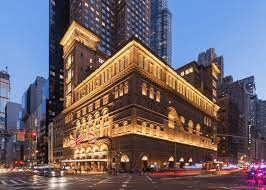
What revolutionary invention did Gustavus Swift invent?
In the 1880s, meatpacker Gustavus Swift developed refrigerated rail cars for transporting food.
Toward the end of the 19th century, what were the chief exports from the U.S. to the rest of the world?
By the 1880s, American exports of grain, steel, and textiles dominated international markets.
The book lists five major causes for industrialization. List and explain four of them.

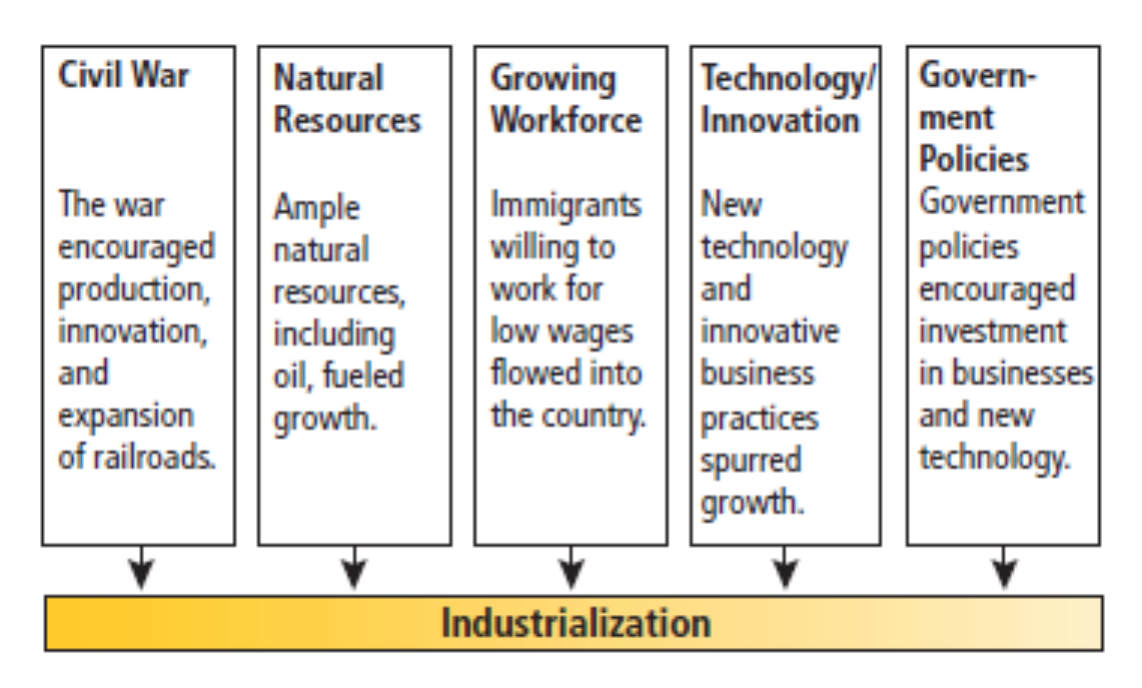
What was the Pendleton Civil Service Act of 1883 and why was it important?
Pendleton Civil Service Act, (Jan. 16, 1883), landmark U.S. legislation establishing the tradition and mechanism of permanent federal employment based on merit rather than on political party affiliation (the spoils system).
Widespread public demand for civil service reform was stirred after the Civil War by mounting incompetence, graft, corruption, and theft in federal departments and agencies. After Pres. James A. Garfield was assassinated in 1881 by a disappointed office seeker, civil service reform became a leading issue in the midterm elections of 1882. In January 1883, Congress passed a comprehensive civil service bill sponsored by Sen. George H. Pendleton of Ohio, providing for the open selection of government employees—to be administered by a Civil Service Commission—and guaranteeing the right of citizens to compete for federal appointment without regard to politics, religion, race, or national origin. Only about 10 percent of the positions in the federal government were covered by the new law, but nearly every president after Chester A. Arthur, who signed the bill into law, broadened its scope. By 1980 more than 90 percent of federal employees were protected by the act.
How did oil tycoon John D. Rockefeller get around Ohio law that banned horizontal mergers?
Ohio state law prevented one company from owning the stock of another, meaning that Rockefeller could not buy out his competitors. His lawyer had an idea to get around this law, called a trust. In a trust, companies assign their stock to a board of trustees, who combine them into a new organization. The trustees run the organization, paying themselves dividends on profits.